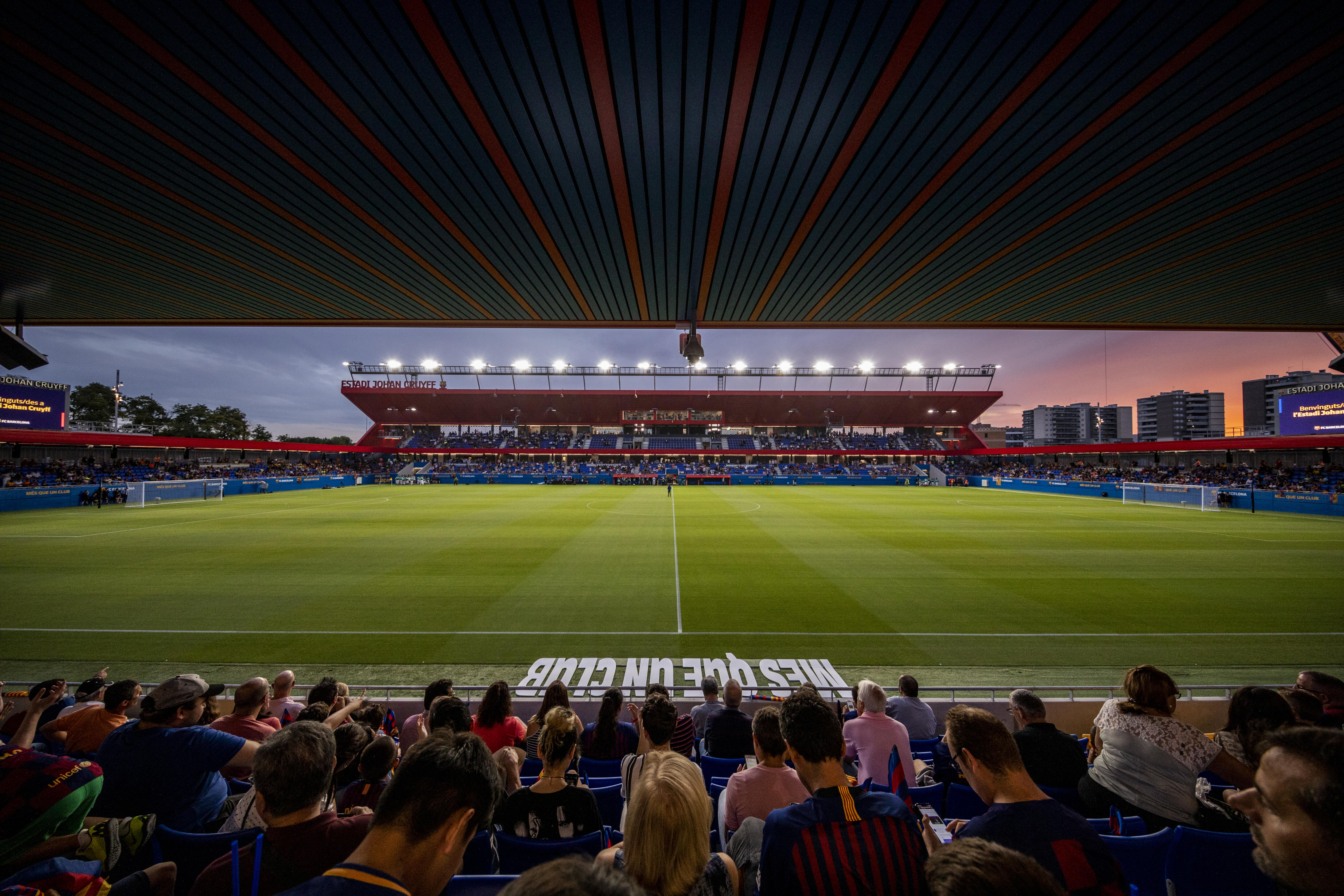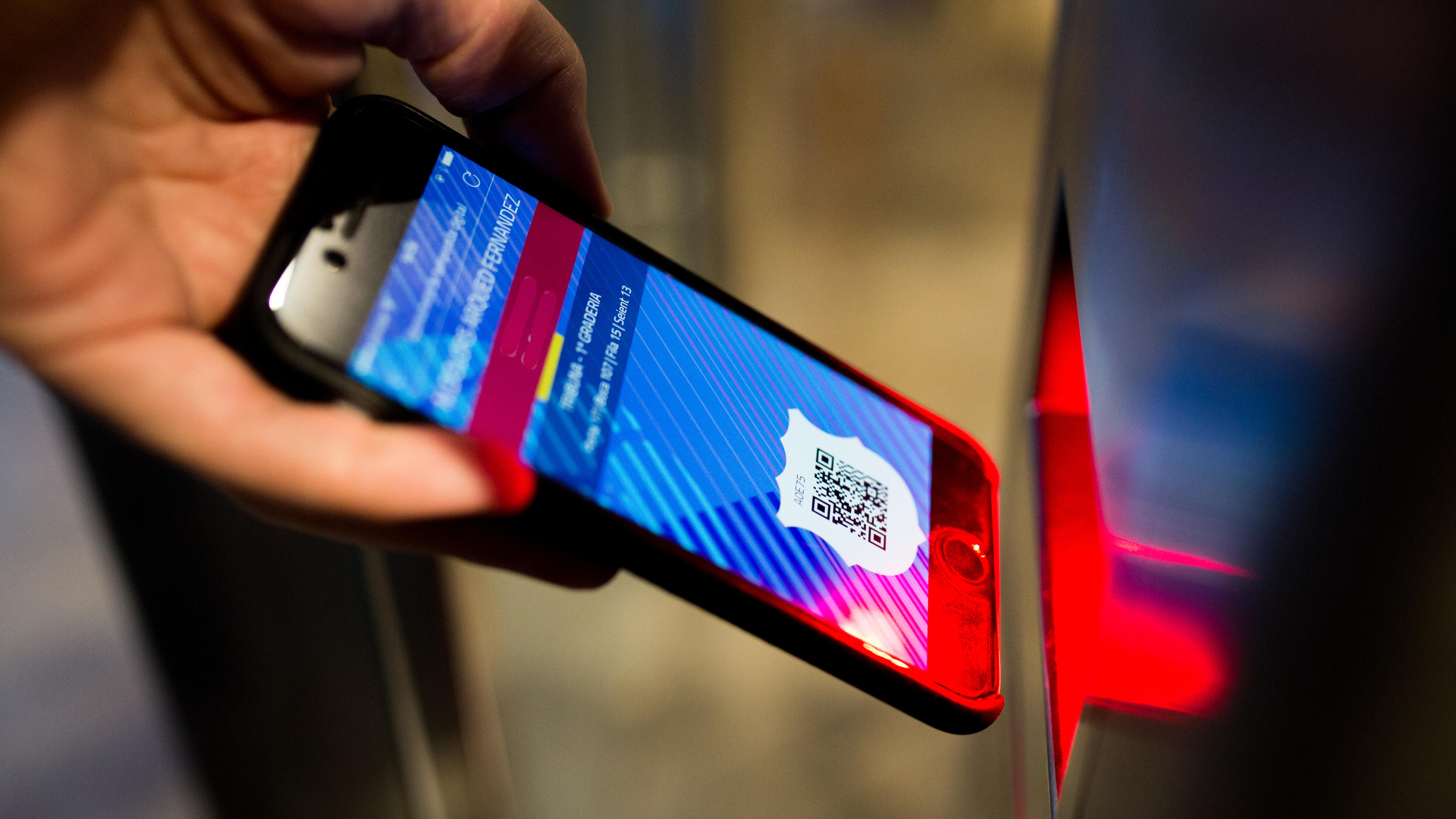December 7, 2020
Marketing, Communication and Management
Smart Facilities
An intelligent Camp Nou management system which will help enhance other venues
The IoTwins project, financed by the European Union in its Horizon 2020 programme, will be used to develop an Espai Barça management tool that can then be applied to all kinds of sports facilities, commercial areas and mass events where people’s mobility and safety is a challenge. The initiative brings 23 partners together that will develop an intelligent system based on big data and cloud computing which will validate different and diverse scenarios such as manufacturing or facilities management. The latter will be the case that Barça will take part. The objective is to optimise operations and safety while facilitating and improving mobility and the fan experience within the stadium and club facilities.
The role of FC Barcelona will consist in enabling sensors to collect information when fans move around the stadium and its facilities. After processing this data, it will be used to make decisions and launch automated processes, which will result in an improvement in safety, the performance of the facilities for the fan and a greater profitability of the club’s spaces.
A tool to manage wisely all kinds of large venues
Initially, the tool will be useful to combine the construction at Camp Nou with the public attendance for the matches, which will take place simultaneously. Afterwards, a replica of the tool will be made for the Johan Cruyff Stadium, with a capacity for six thousand spectators. Within the scope of this project, there’s the possibility of licensing the resulting system to be used in shopping centres, malls, concerts, festival venues, etc. as part of the system’s business model.

The project started on September 1, 2019. So far, in a first stage, information has been collected from the main attainable data sources in order to homogenise it, so that it can be directly captured in the future. The objective is to create a digital twin of the stadium, a 3D model, in which all what take place can be simulated in order to manage the facility. There are already market solutions that use sensors to, for example, modulate climate comfort or control the opening of doors, but this project goes beyond as it will have very accurate simulations on how people move and interact with the facilities for different scenarios, including match days or any other day.
A behavioural study model
You just have to set the tracking variables of the spectators’ flow and analyse it. In the phase starting now, the information obtained from the density and movement of the sensor systems, social media, the access information from the turnstiles, the weather, among others, is introduced into the MareNostrum 4 supercomputer, from the Barcelona Supercomputing Centre (BSC). With this data, the supercomputer can start generating simulations that can be compared to reality. The information processed would take years to obtain results with a conventional computer. With this supercomputing system, in a few minutes the results produced allow us to train and adjust the behavioural study model.
Once this is done, the model will be improved and refined when entering more information until its predictions are as precise and accurate as possible. The idea is to train it with what if questions. For example, what would happen if a certain door is closed. If the model says that there will be people build-ups in some places, pertinent decisions and changes would have to be made so that it does not happen. The variables may depend on the profile of the fans who come to see the visiting team (if it is their fans or tourists who are occasionally in the city that day), how the competition is going, in what position the teams are, the traffic, if a star has been injured, etc.
A tailor-made experience
By being able to anticipate the behaviour of the attendees to optimise circulation within Camp Nou, this project will solve the difficulty of performing construction works in the stadium at the same time the competition is held. This is the main goal of the programme in the short term. With the works, there will be machinery movements and parts of the facilities that will be exposed, which poses a challenge in terms of safety and usability of the facilities.

Also, besides making access to the facility easier, the spectator’s experience will be improved. It will be possible to study the best offers for fans who arrive at the stadium first, solve hospitality problems by speeding up the always cumbersome and often uncomfortable purchases of food and refreshments, control the influx to bathrooms and its impact on maintaining them in perfect conditions, etc… The goal is to eliminate all the adversities entailed in attending a mass event, to focus on a comfortable experience.
Prediction of attendee behaviour
The quality of the data that is provided to the supercomputer will be useful to model all the cases. For example, those who go to the stadium for the very first time often find themselves disoriented and obstruct the others. It is not the same someone attending with children, and someone going alone or with friends. The more possible scenarios shared with the supercomputer, the better it can predict the fan’s behaviour and generate the most viable path for them to reach to their destination depending of the circumstances they’re facing. The tool will be able to predict how many cases can occur, depending on which match is going to be played. Its implementation will also be very useful for decisions made in real time.
If there are no delays, the project will be completed within two years. With a well-trained model, the data would be uploaded to the cloud and the supercomputer would no longer be necessary. The tool will also be used for common spaces such as the Barça store or the museum so that it can be applied in shopping centres and other venues. If the mobility of people in a space is improved, they will have a better experience and enjoy the visit. This will help businesses to capture part of this added value enhancing the visitor’s satisfaction. Now it is only a research project in an experimental phase, but the optimisation of access to large spaces will be a necessary tool in a few years.

This project has received funding from the European Union’s Horizon 2020 research and innovation programme under grant agreement No 857191
This article reflects only the author’s view and that the Commission is not responsible for any use that may be made of the information it contains
BIHUB Team
KNOW MORE
CATEGORY: MARKETING, COMMUNICATION AND MANAGEMENT
This model looks to the future with the requirements and demands of a new era of stadiums, directed toward improving and fulfilling the experiences of fans and spectators, remembering “feeling” and “passion” when designing their business model.
CATEGORY: FOOTBALL SPORTS PERFORMANCE
Through the use of computer vision we can identify some shortcomings in the body orientation of players in different game situations.
CATEGORY: MEDICINE HEALTH AND WELLNESS
A health check must detect situations which, despite not showing obvious symptoms, may endanger athletes subject to the highest demands.
CATEGORY: FOOTBALL TEAM SPORTS
In the words of Johan Cruyff, “Players, in reality, have the ball for 3 minutes, on average. So, the most important thing is: what do you do during those 87 minutes when you do not have the ball? That is what determines whether you’re a good player or not.”
CATEGORY: MEDICINE HEALTH AND WELLNESS SPORTS PERFORMANCE
Muscle injuries account for more than 30% of all injuries in sports like soccer. Their significance is therefore enormous in terms of training sessions and lost game time.
DO YOU WANT TO KNOW MORE?
- SUBSCRIBE
- CONTACT
- APPLY
KEEP UP TO DATE WITH OUR NEWS
Do you have any questions about Barça Universitas?
- Startup
- Research Center
- Corporate